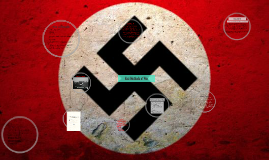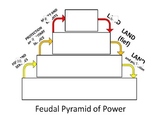

Links to other resources are also provided. Includes an interview with the author and essays by teachers of junior high school social studies, high school literature, and a university Japanese history course.ĭropping the Bomb on Hiroshima and Nagasakiįrom, "a project of the nuclear age peace foundation." This page offers a chronology of the decision to bomb Nagasaki and Hiroshima, audio recordings, responses to the bombing, an article on Korean survivors, photographs, and "The Last Act"–information about the controversial Smithsonian exhibit.

#Japan feudalism chart series#
This four part series focuses on Richard Kim's book about one Korean family's experience under Japanese colonial rule. History As Literature, Literature As History: Lost Names: Scenes from a Korean Boyhood by Richard Kimįrom the Association of Asian Studies journal Education About Asia, Volume 4, Number 2, Fall 1999. Dunnagan explores "Life Under Tokugawa Rule," "Japan's View of the West," "The Meiji Restoration," and "The Industrialization of Japan." 20th Century Japan

The Meiji Restoration and the Emergence of Industrialized Japan~AP World History, 1750-1914.įrom the Curriculum Outlines collection of The Japan Studies Leadership Program at the Five College Center for East Asian Studies Web site. Discussion questions are provided for each section. Provides an introductory essay "Japan Answers the Challenge of the Western World" and two primary source documents: the Charter Oath of 1868 and the Meiji Constitution. The Meiji Restoration and Modernization~AP World History, 1750-1914.įrom Columbia University's East Asian Curriculum Project Contemporary Japan: A Teaching Workbook. Includes 5 "Questions for Analysis." Meiji Japan Provides text of the Closed Country Edict of 1635 and Exclusion of the Portuguese, 1639, after a brief introduction. Explores Japan's isolationist policies during the Tokugawa period through primary source documents. Watts at the Wake Forest University Web site. The Seclusion of Japan~AP World History, 1450-1750.įrom the Fall 2001 syllabus of Dr. This virtual tour of Edo (modern-day Tokyo) uses woodblock prints from the era to illustrate Edo history, culture, and tradition. "Part Two: Was There Feudalism in Japan? The Ako Incident within a World History Context" by Diana Marston Wood uses The 47 Ronin Story by John Allyn to explore "the meaning of feudalism in 18th century Japan."įrom the Japan-America Society Web site. "Part One: Using Literature as a Window on Historic Japan" by Patience Berkman uses Katherine Paterson's historical novel Of Nightingales that Weep as a gateway to the Kamukura Era. After a general introduction, this curriculum unit is divided into two parts. Knight/Samurai and Lord/Daimyo: Should We Compare European Feudalism to Japan?~AP World History, Foundations.įrom the Curriculum Outlines collection of The Japan Studies Leadership Program at the Five College Center for East Asian Studies Web site. Teacher outlines are provided on "Japan and the West: The Meiji Restoration," "Imperialism, War, and Revolution in East Asia: 1900-1945," and "Introduction to Contemporary Japan: 1945-Present." Japanese Feudalism Units are "Commodore Perry and Japan," "The Meiji Restoration and Modernization (1868-1930)," "Japan's Quest for Power and World War II in Asia," "The Atomic Bomb," and "The Occupation: Democratic Reform Under the Allies." Units include readings, primary source documents, and exercises. This site links to a timeline and overview of modern Japanese history and offers five separate curriculum units from the beginning of the Meiji Restoration (1868) to the Allied Occupation of Japan. History, 1800 to Present: Japan > Teaching Unitsįrom Columbia University's East Asian Curriculum Project Contemporary Japan: A Teaching Workbook. Other resources available from site are an art gallery, timeline, readings in Japanese culture, and a short glossary of Japanese terms and concepts. Ancient Japan by Richard Hooker is a "learning module in the form of a 'research textbook'." The site covers from the Yayoi period (400 B.C.E.-250 C.E.) through the Heian period (794-1185), including sections on early Japanese Buddhism and early Japanese culture. This calendar, with links to important dates in Japanese history, is designed to encourage discussion and further research on historical events.įrom Washington State University's World Civilizations: An Internet Classroom and Anthology. From the UCLA Center for East Asian Studies Teaching about Japan pages.


 0 kommentar(er)
0 kommentar(er)
